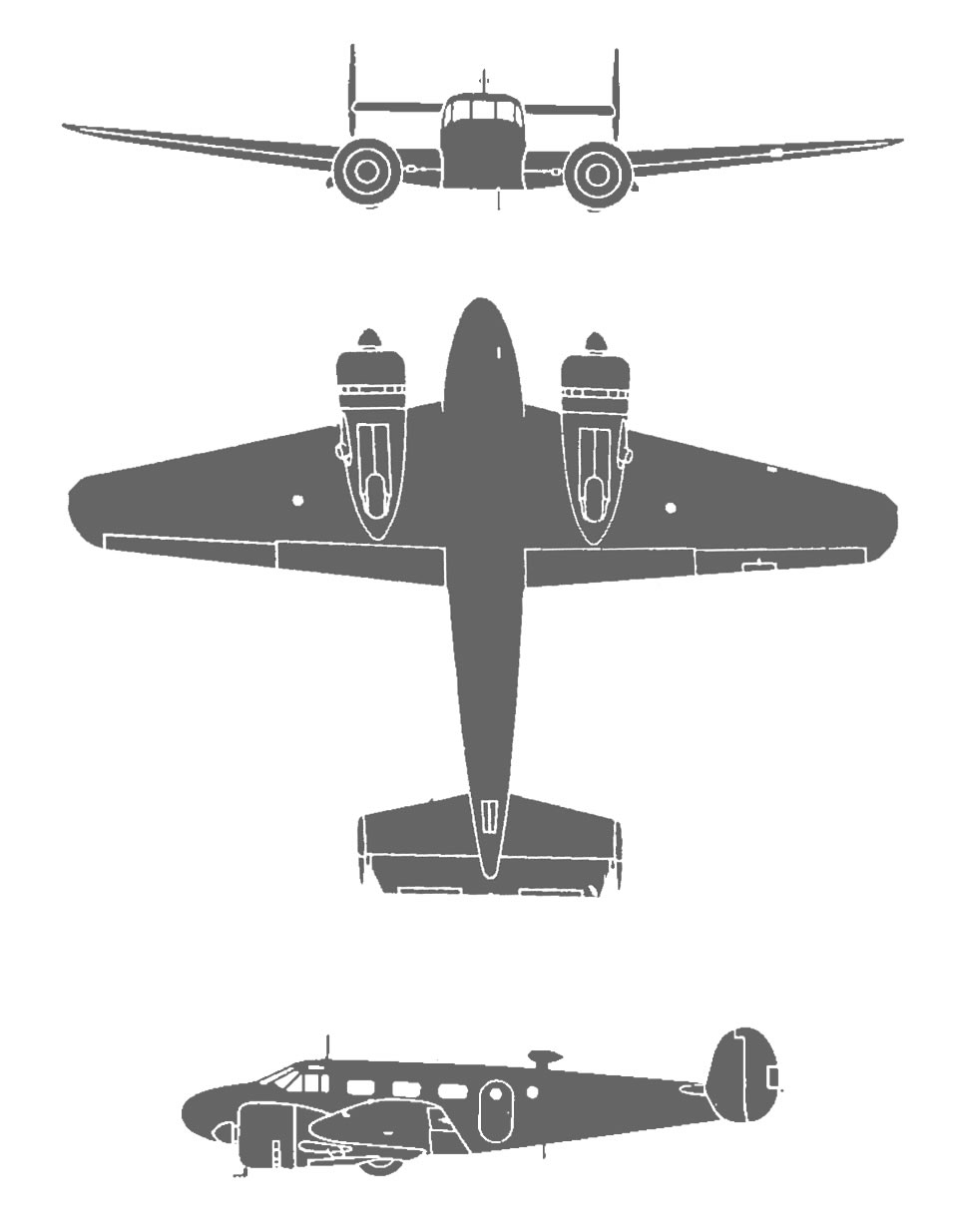C-45 Airbase Arizona

Description:
Base:
Mesa, AZ
Website:

| C-45 Specs | |
|---|---|
| Role | Trainer / Utility |
| Manufacturer | Beech Aircraft |
| Introduced | 1937 |
| Produced | 1937–1970 |
| Power | 2 × Pratt & Whitney R-985-AN-1 "Wasp Junior" radial engines, 450 hp |
| Length | 34 ft 2 in |
| Height | 9 ft 8 in |
| Wingspan | 47 ft 8 in |
| Range | 1,200 mi |
Wartime Mission:Transport, navigational and weapons trainer, light bomber, photo-reconnaissance, mission liaison, and mothership for drones.The C-45 Expeditor or a variant was initially introduced to the civilian market, but once war broke out, its potential was realized and produced began in large quantities. It was used in every branch of American service during WWII and Korea and remains one of the world’s most widely used light aircraft.
The C-45 Expeditor or a variant was initially introduced to the civilian market, but once war broke out, its potential was realized and produced began in large quantities. It was used in every branch of American service during WWII and Korea and remains one of the world’s most widely used light aircraft.
Post-war, the Expeditor was still being produced up through 1970 and used for Strategic Air Command, civilian feeder aircraft, business travel, aerial spraying, dry cloud and fish seeding, aerial firefighting, mail delivery, ambulance service, skydiving, weapon- and drug-smuggling, skywriting, banner towing, and stunts. It could be modified with tail or nosewheels, skis or floats.
During and after World War II, over 4,500 Beech 18s saw military service—as light transport, light bomber (for China), aircrew trainer (for bombing, navigation and gunnery), photo-reconnaissance, and "mother ship" for target drones—including United States Army Air Forces (USAAF) C-45 Expeditor, AT-7 Navigator, AT-11 Kansan; and United States Navy (USN) UC-45J Navigator, SNB-1 Kansan, and others. In World War II, over 90% of USAAF bombardiers and navigators trained in these aircraft.

